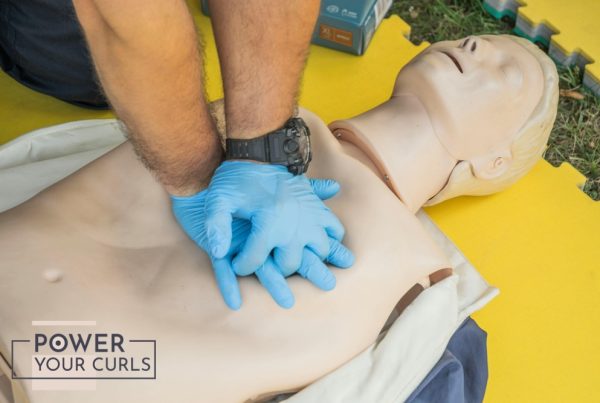
Do you have trouble sleeping? Well then, you’re not alone. Around a third of the adult population (32.8%) is sleep-deprived. Whether it’s because of sleeping habits, lifestyle choices or other issues such as bruxism, there are still ways you can make your slumber peaceful again.
Some people grind their teeth during sleep without realising it. This behaviour, known as bruxism, is often linked to stress, jaw tension or sleeping positions that overload the neck and facial muscles. Persistent nighttime grinding can lead to headaches, jaw discomfort and gradual tooth wear. Managing these issues in a clinical setting involves specific diagnostic tools and materials used to evaluate the extent of wear and plan treatment, which makes it important to consult a trusted clinician and a practice equipped with the proper instrumentation and supported by efficient dental supply ordering for an accurate assessment.
In this article, we will venture into sleeping posture and bed setups that will help you sleep. But first, let’s start with the different sleeping positions.
What Are the Main Sleeping Positions?

Even when you think you’re completely still while sleeping, usually that’s not the case. A lot of us change positions in our sleep several times a night. We can sleep in multiple positions at a time, but there are generally three main sleeping positions:
- On your front
- On your side (either side)
- On your back
Whichever position you’re in, there will always be certain pros and cons. It also depends on whether you already have certain pre-existing conditions like chronic back pain. Whatever the case, your sleeping position might change based on the type of bed you have.
How to Choose the Right Bed for You?

The wrong bed might make your sleep worse. It will impact your ease of movement, leading to difficulty maintaining a good sleep cycle. Two (2) factors that help you choose the right one are the size and height of the bed itself.
The Size of the Bed
Generally speaking, a bigger bed is always better. A smaller bed will be too constrictive with position options and overall space.
A larger bed will give you extra room. You can adjust your posture as much as you like with the given space. All of your limbs will have ample support as well. A bigger bed is also ideal when you have a partner. There’s a lower chance of disturbing their sleep when you change positions or get comfy.
The Height of the Bed
The bed’s height will determine how smoothly you can get in and out of bed. Often, it’s mostly about your preferences. It’s already great when you dangle your feet at the edge of your bed and you can reach the ground.
A lower bed like a platform bed might worsen back and hip problems. It’s harder to get up from a lower bed than a higher one, but it’s so easy to get into. As for taller beds, like loft beds, it’s more difficult to get in than out of bed.
Some people would perpetuate the rumour about sleeping on the floor and how it’s good for back issues. Granted, it does feel nice when you have moderate back problems. However, standing up is a whole other ballgame.
What Makes a Good Mattress?
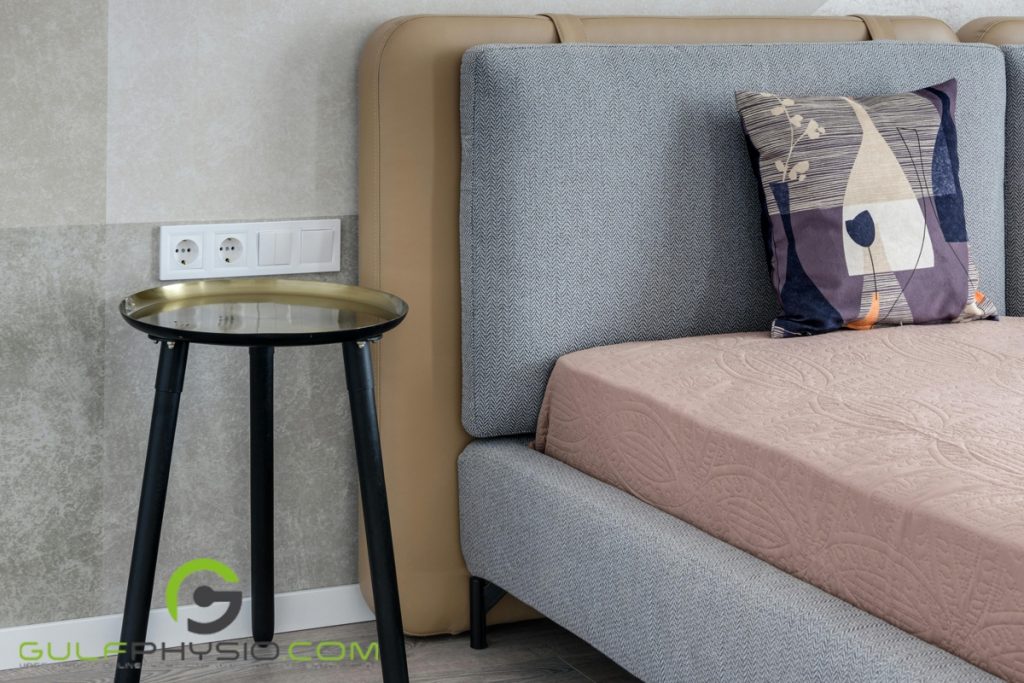
Apart from the bed itself, nothing beats a good mattress. A mattress will be good for you when it gives you the right support after a hard day’s work. While recuperating, you should have a comfy setup that aids sleep quality and overall relaxation.
The mattress firmness levels will directly influence the comfort you’ll get. It will directly focus weight on specific points of your body. These pressure points change depending on your current sleeping position.
When you’re on your back, the pressure points are your head, shoulders, pelvis, and heels. When you’re on your side, the pressure points shift to your ear, hip, knees, and ankles but also your shoulder. When you’re on your front, the pressure points also consist of the knee, hip, and ear. This position also affects the toes and chest.
How Can You Tell if Your Mattress Is the Right Firmness for You?
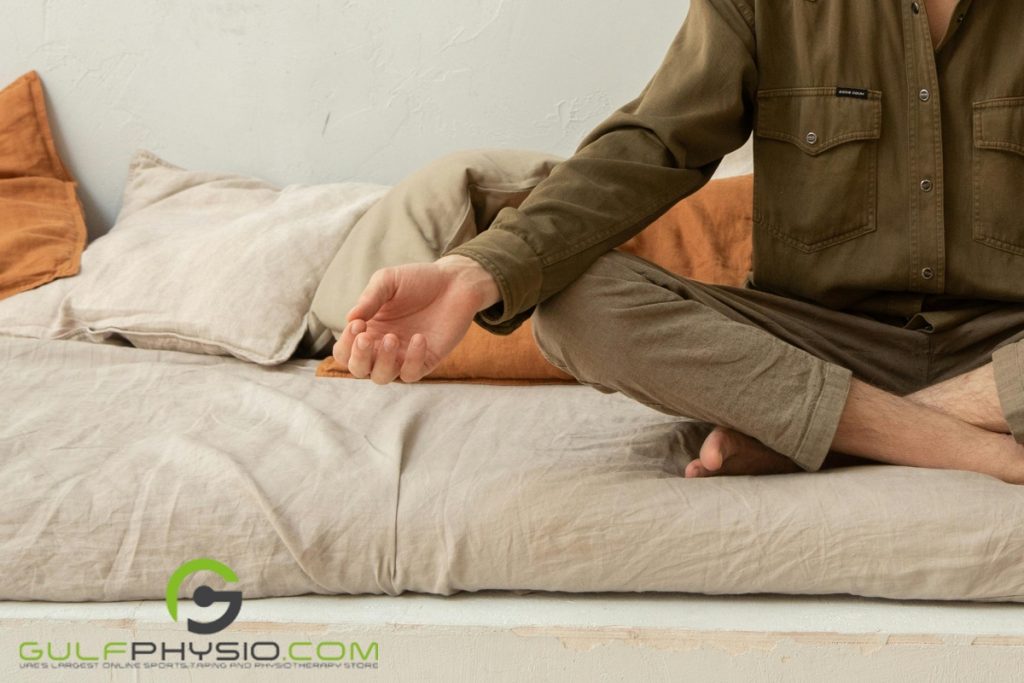
There are two (2) ways to measure the right mattress for you. For the first one, lie down on your back. Move your hand with your palm down between the mattress and the lower curve of your back. Your mattress has the perfect firmness if your hand glides in relatively easily. If there’s too much or not enough space, the mattress is too hard or too soft, respectively.
Next, lay down on your side this time. The mattress is perfect for you if you can feel its surface under the entirety of your side. It’s too hard if you can’t. On the other hand, it’s too soft if your hip can reach the base. This might lead to hip problems in the long run.
You can check out the mattress firmness scale below to better guide you with the levels of mattress firmness.
What Is the Mattress Firmness Scale?
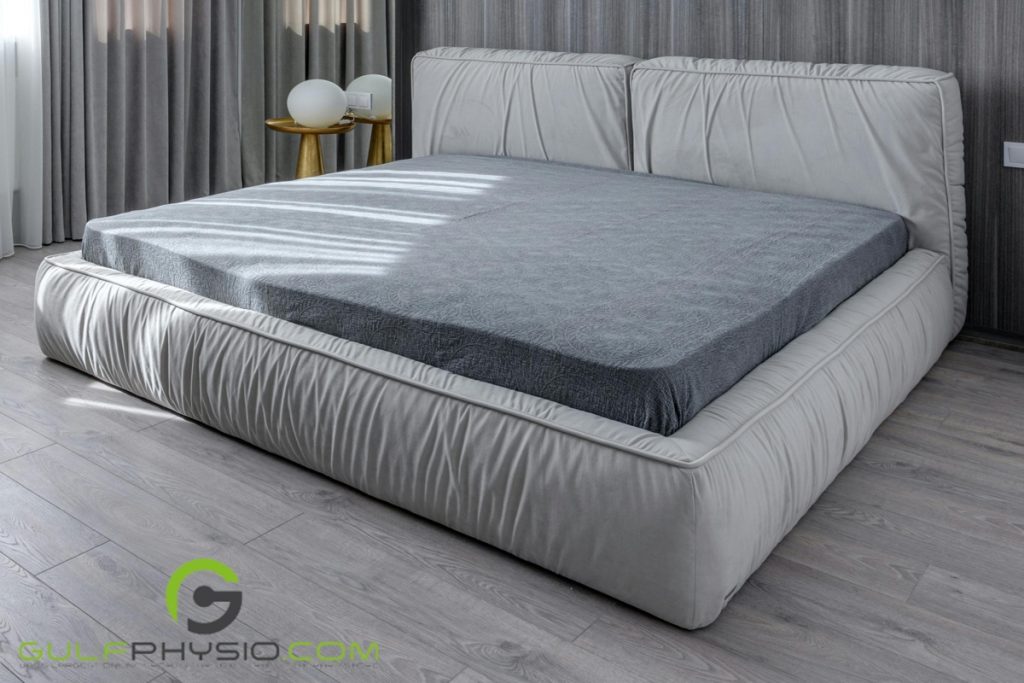
The mattress industry created a universal rating system to help you differentiate the different levels of mattress firmness. The mattress firmness scale has a range of 10 levels with varying degrees of firmness as shown below:
| Level of Firmness | How It Feels | Definition |
| 1 | Extra Soft | Extra soft mattresses mould closely to the slumberer’s body and significantly sink |
| 2-3 | Soft | Soft mattresses mould considerably to the slumberer’s body and sink only by the surface |
| 4 | Medium Soft | Medium soft mattresses mould relatively closely to the slumberer’s body and sink only some |
| 5 | Medium | Medium mattresses still mould to the slumberer’s body but only sink a little |
| 6 | Medium Firm | Medium firm mattresses mould moderately to the slumberer’s body but don’t sink much |
| 7-8 | Firm | Firm mattresses mould minimally to the slumberer’s body and barely sink |
| 9-10 | Extra Firm | Extra firm mattresses don’t mould to the slumberer’s body and have no visible sinkage |
Several studies have concluded that a medium-firm mattress is the top choice for better sleep quality. However, the firmness of your mattress will still depend on you and your comfort levels.
What Mattress-Related Problems You Might Face?
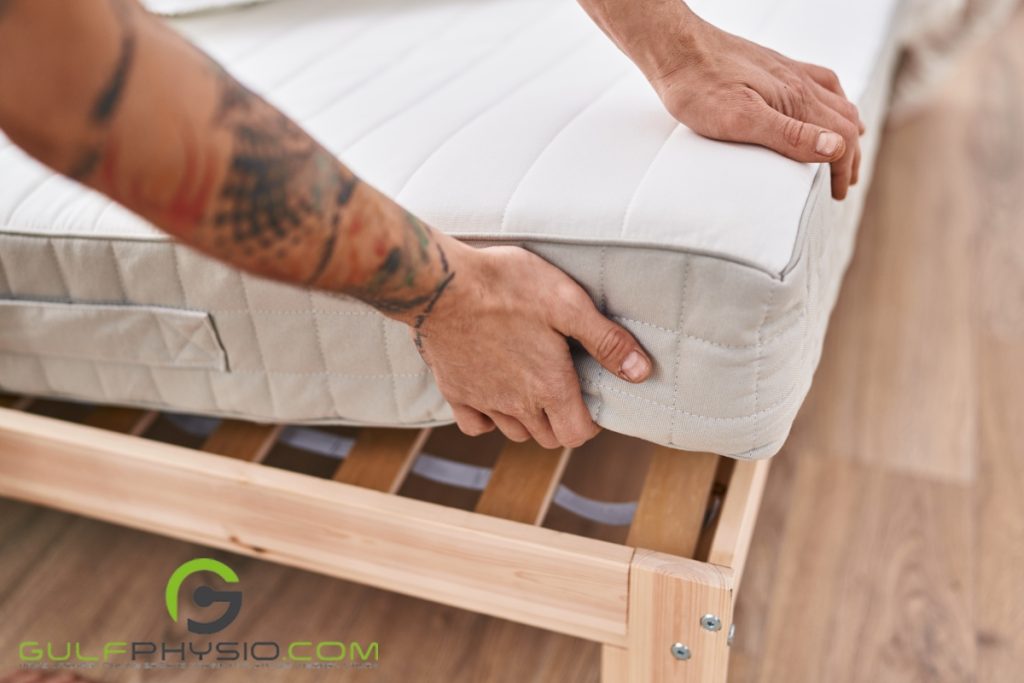
Not many people know that you need to turn your mattress frequently. It’s a pretty simple task to add to your list of chores. Although, some mattresses are heavier than others. Possibly look for a mattress that doesn’t need to be turned over to avoid future problems.
Another potential problem involves individuals in relationships. Two (2) people don’t exactly have the same weight, height, build, and temperature regulation. The mattress would either be a perfect fit for one or neither. Luckily, mattresses do come in different firmness ratings per side.
What’s the Right Mattress for You?

After mattress sizing and firmness, you’re ready to get your perfect mattress fit. Here are two (2) of the most well-known mattress types for you. Below, we also included their advantages and disadvantages:
Orthopaedic Mattress
A common misconception about orthopaedic mattresses is that this option is the best for you. Even when orthopaedic is a medical term, it is used as a marketing strategy by mattress companies. In this case, it refers to the mattress’s level of hardness.
Every mattress manufacturer has their grades for firmness. When it comes to pressure points, an orthopaedic mattress might be too hard on said points when you sleep.
Memory Foam Mattress
A memory foam mattress is made of polyurethane foam with no springs. Because of the material, a full one will comfortably accommodate two without problems regarding differences in firmness. It will sculpt itself around you and your partner’s position regardless of size or stature.
Whenever you or the other moves in your sleep, it won’t be a problem due to the lack of springs. Nobody’s sleep will be disturbed. Once you get out of bed, the mattress goes back to its original form.
The downside could be its heat retention properties. Take note of temperature changes on both sides of the bed.
What Makes a Good Pillow?
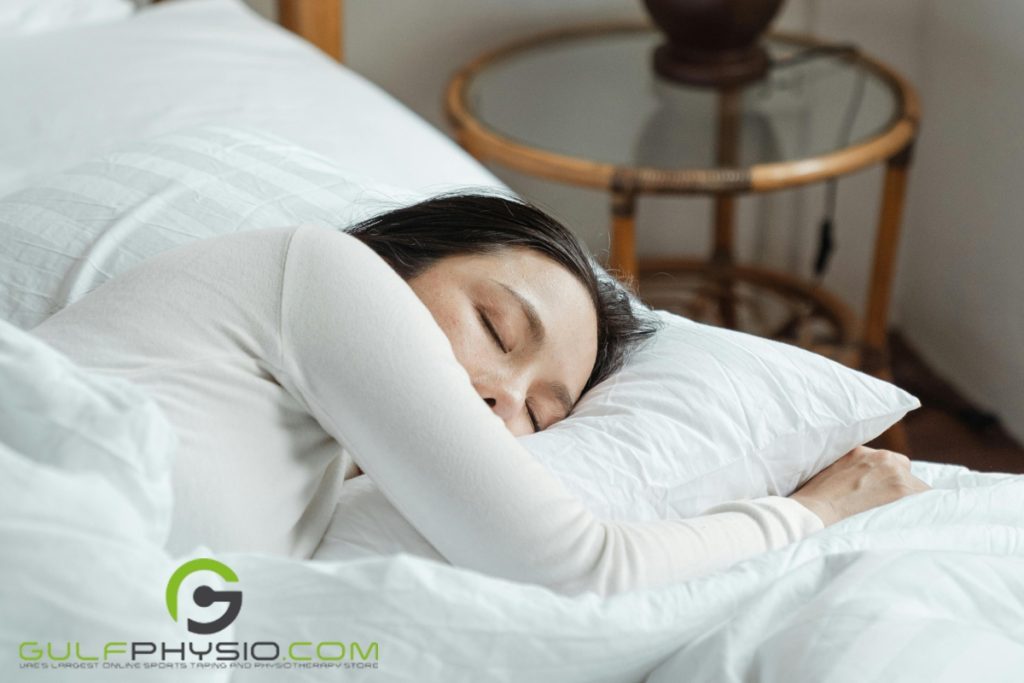
Neck troubles, like neck pain, can be linked to misalignment in bed. Due to improper pillows, neck problems can even get worse over time. Therefore, a good pillow practically makes or breaks a proper bed setup.
A good pillow should provide enough comfort and support for your spine, neck, and head while you sleep. As you rest, it maintains the natural curvature of your spine. These should be in a neutral alignment for the pillow to be considered good for you.
How Can You Tell if Your Pillows Are the Right Fit for You?
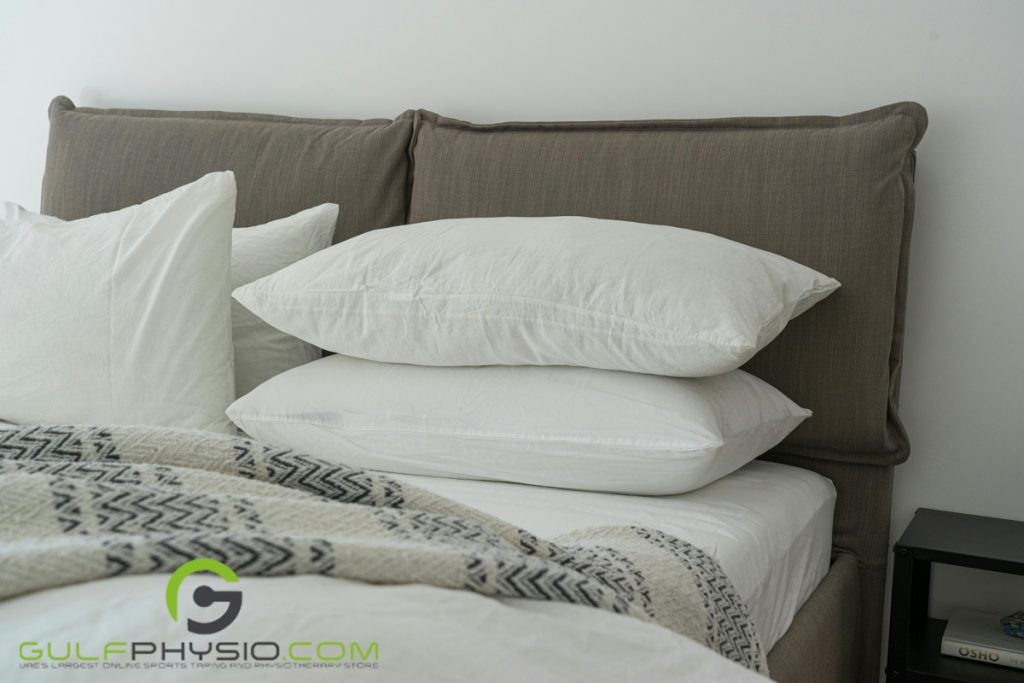
Knowing what kind of pillows you need will depend on your sleeping posture. Let’s start with the worst position for your neck overall: on your front. However, if you need to sleep on your stomach, the best action is using no pillows.
Laying on your side is better, but you need a pillow for this position. Extra height compensates for the space between your head and neck. A full-size pillow or two should close the gap.
As for when you sleep on your back most of the time, you don’t need the support of two (2) pillows. The pillow you use is supposed to be just high enough to support your neck and head. A single pillow should be enough to keep your chin and head up in the right position.
What Are the Right Pillows for You?

Pillows come in all shapes and sizes. Whatever the size, they are typically filled with feathers, polyfill, or memory foam. The covers are generally the same, ranging from cotton to a polyester blend. Apart from regular pillows, professionals also recommend a shaped neck pillow.
Shaped Neck Pillows
A shaped neck pillow can better support your neck than any other pillow on the market. If you have trouble finding this pillow, it’s also known as an orthopaedic, contoured, or memory foam pillow.
This particular pillow has a different shape than a regular pillow. It’s slightly bigger on one end. It can fill the space between the bed and your neck while cushioning your head.
People’s reports on this pillow are mixed. Some say that their neck problems went away after using this pillow while others didn’t get better. It’s still best to try out the pillow for a week first and see for yourself.
What Are Sleeping Postures?

Your posture while you sleep is also important. Depending on your sleeping posture, the way you sleep will have some underlying benefits. Some sleeping postures also can avert postural issues in the future.
Be mindful of your body while you sleep. Steer clear of sleeping on your side, shoulder, or any other body part if it hurts. You can try again when they don’t hurt anymore or after you get a check-up. However, you can still roll around in bed even when they don’t know they do.
There are a few tricks you can do if you unconsciously roll in your sleep. One, place an extra pillow on the side you don’t want to roll onto. Two, put a small ball in your pyjama pocket on that side as well. Instinctively, our bodies don’t like rolling on things, even in our sleep.
Common Sleeping Postures
Every sleeping posture shares base positions: front, side, and back. Typically, there are six (6) common sleeping postures, which are below along with their stats:
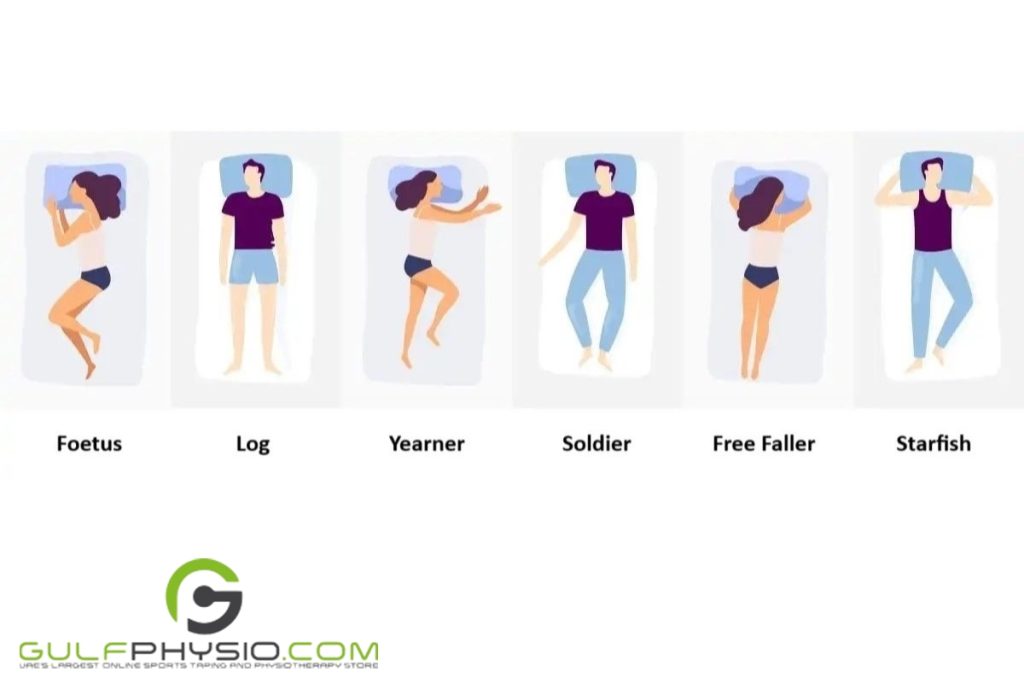
- The Foetus – 41% use this sleeping posture
- The Log – 15% use this sleeping posture
- The Yearner – 13% use this sleeping posture
- The Soldier – 8% use this sleeping posture
- The Freefaller – 7% use this sleeping posture
- The Starfish – 5% use this sleeping posture
The foetal posture, the most popular one, is also the worst possible posture for back problems. It emphasises the lower back, the main source of back pain. Even when it does feel less painful in this position, it opens up your nerves for more pain. You know this is the case if your lower back aches once you move back from this position.
For back problems, you can try sleeping on your side. Just don’t raise your knees too high for the best results.
What to Do to Have a Better Sleeping Posture/Position?

Not everybody can change their mattresses or beds just like that. Nevertheless, there’s always something that can help you slumber when you have back, hip, or knee pain.
For Back Pain
Get a pillow or an extra towel if you’re in a hotel. Support the arch of your back with a folded towel when you sleep on it. Reposition the towel or a small pillow under your waist when you sleep on your side. Put it just under your hips when you prefer to sleep on your stomach.
For Hip & Knee Pain
You’ll need an extra pillow for this type of pain. Placing the pillow under the knees while you sleep on your back will reduce stress on your joints. However, this method is not advisable for people with circulatory issues since it can potentially lead to vein thrombosis. If you suffer from poor blood circulation, ask your local physiotherapist or any other medical professional first.
Place a pillow between your knees when you’re on your side. This position aligns the hips while removing direct pressure on the knees. It’s particularly effective in treating medial knee pain, the most common knee issue.
How to Position Your Shoulder While Sleeping?

A good sleeping posture includes proper shoulder position, especially for people with shoulder problems. To avoid this, don’t sleep with your arm under your pillow. It puts direct pressure on your shoulder, which can lead to more pain. If your arm is like this out of habit, your pillow might be too low.
Instead of putting your arm under your head, use a pillow and a better position. Use a pillow or two to support the weight of your arm by or to the side. One pillow should be under the shoulder blade while the other is under the rest of the arm. Your arm should only be higher by 75 degrees or less to your body.
Most people say laying on your side is a worse position when you have lower arm problems. You can remedy this by using your pillow. Keep your arm as low as possible, like at a right angle to your body. Make sure you don’t crush your arm or let it dangle off the bed though. With your affected arm elevated, put a pillow under it as well.

